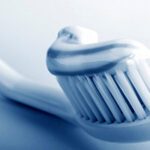Patients trust their dentists. According to Harris Poll Interactive (Harris Poll Interactive, March 2006) 47% of American adults completely trust their dentists. That ranks dentists right between physicians at 50% and nurses at 46%.
Undoubtedly, dentists may lose the trust of some patients as a result of post operative pain – pain that may occur after the routine restoration of a tooth with a filling, crown or root canal treatment. Patients question the cause of post operative pain and who or what is responsible.
A short histology lesson will aid in understanding dental pain. A tooth is made of three layers. The outside of the tooth is enamel. Enamel is a very hard glassy material that is resistant to chemicals and abrasion. Enamel does not feel sensations like pain. People loose enamel by abrasion or grinding by eating coarse food such as natural grain with a high sand or husk content, or by grinding the teeth together (dentists call tooth grinding bruxing.)
Inside the enamel is the dentin. Dentin is not as hard as enamel due to the presence of very small tubes that run the width of the dentin and normally contain parts of sensory cells or nerve endings. Dentin is not resistant to abrasion and decay. Additionally, exposed dentin can be very sensitive. Exposed dentin is easy to treat with a variety of agents, toothpastes and dental bonding.
The inner layer of the tooth is the pulp. The pulp resides inside the root canal. Root canal treatment involves removing the pulp and replacing it with a filling. The pulp consists of the dental nerve and blood vessels. Normally, about a quarter of an inch or more of dentin and enamel protects the pulp. When accident or decay exposes the pulp, or trauma injures the pulp as when a baseball hits a tooth, the pulp usually dies causing pain and infection.
Teeth need restoration (fillings, crowns, etc.) for a variety of reasons. Often, the reason for the restoration determines the likelihood of post operative pain. For example, deep decay that approaches the pulp may allow bacteria to enter the pulp causing infection and pain later.
Another common reason for restoring a tooth is when trauma breaks a tooth. It is not always possible to anticipate the death of the pulp due to an accident. When the dentist rebuilds a tooth broken in an accident, the pulp may die causing the tooth to become uncomfortable later.
Teeth with deep decay and traumatic injury may feel fine before treatment and become painful later. When the pulp dies from trauma or infection, the only treatment the dentist can offer is extraction or root canal treatment.
Sometimes, dental treatment will irritate the tooth or the area around the tooth. Dental drills rotate at several thousand to several hundred thousand rpm’s (rotations per minute). Friction from the fast moving drill bit creates frictional heat that can damage the pulp. That is why high speed dental drills spray water on the tooth as they work. Even so, there might be an increase in the temperature of the pulp. That temperature increase may cause mild to moderate pain as the tooth recovers over the next few days or weeks. A pulp that is in borderline health from trauma or infection may instead die days, weeks, or even years later.
The materials that dentists use to repair teeth might damage the pulp temporarily or permanently. Bonding is beneficial when teeth have cavities or to change the appearance of teeth. Dentists use many acidic chemicals and reagents to bond crowns and fillings to teeth. The same agents that are so beneficial are also irritating to the pulp. There have even been materials that cause transient to permanent pain.
The way dentists use materials may cause pain. Tooth colored filling material, composite, is a melange’ of plastic and ground glass or ceramic. Most modern composites set with exposure to light. Composite shrinks as it sets, and it only sets to the depth that light penetrates. A dentist might try to fill a tooth with a mass of composite that is too thick. As it sets, the shrinking filling stresses or even cracks the tooth which causes pain. Additionally, unset composite inside the restoration will irritate the pulp. Dentists learn to build composite restorations in layers to prevent pain and irritation. Obviously, this technique will take more time than filling a cavity all at once.
Silver and gold restorations conduct temperature changes rapidly to the pulp. Usually, this condition improves in up to a few weeks. Porcelain and composite restorations are less likely to conduct temperature changes as well.
Fillings, crowns and bridge work may not line up perfectly with the other teeth. The dentist and patient can have difficulty sensing the misalignment due to the effects of anesthesia. After a few days, intense pressure from the resulting bite may injure the ligament that holds the tooth or teeth into the bone. The dentist will recognize the symptoms of the high restoration: pain with biting and sensitivity to cold. Easily remedied, the dentist smooths the high spot with the drill and the pain and sensitivity subsides in a few days.
Root canal treatment removes the pulp or what is left of it from the tooth. In most cases that removes all sensation from the tooth. The same infection that damages the pulp affects the surrounding structures; root canal treatment may irritate the surrounding structures, too. Another way that root canal treatment may cause pain is that the root canal filling may be long and stick out of the root of the tooth, or the filling in the visible part of the tooth might by too high. Finally, a possible cause of pulpal death and a possible bad outcome of root canal treatment is the splitting of the tooth root.
It is impossible to repair a tooth with a split root. Other root canal related pain is correctable with treatment.
Teeth with new fillings, crowns, and root canal treatment may develop pain due to the original decay, trauma, the filling material, bonding agents or technique. The pain may subside in a few days, weeks or not at all. If your recently treated tooth develops pain, return to your dentist for evaluation and treatment in two to ten days.


